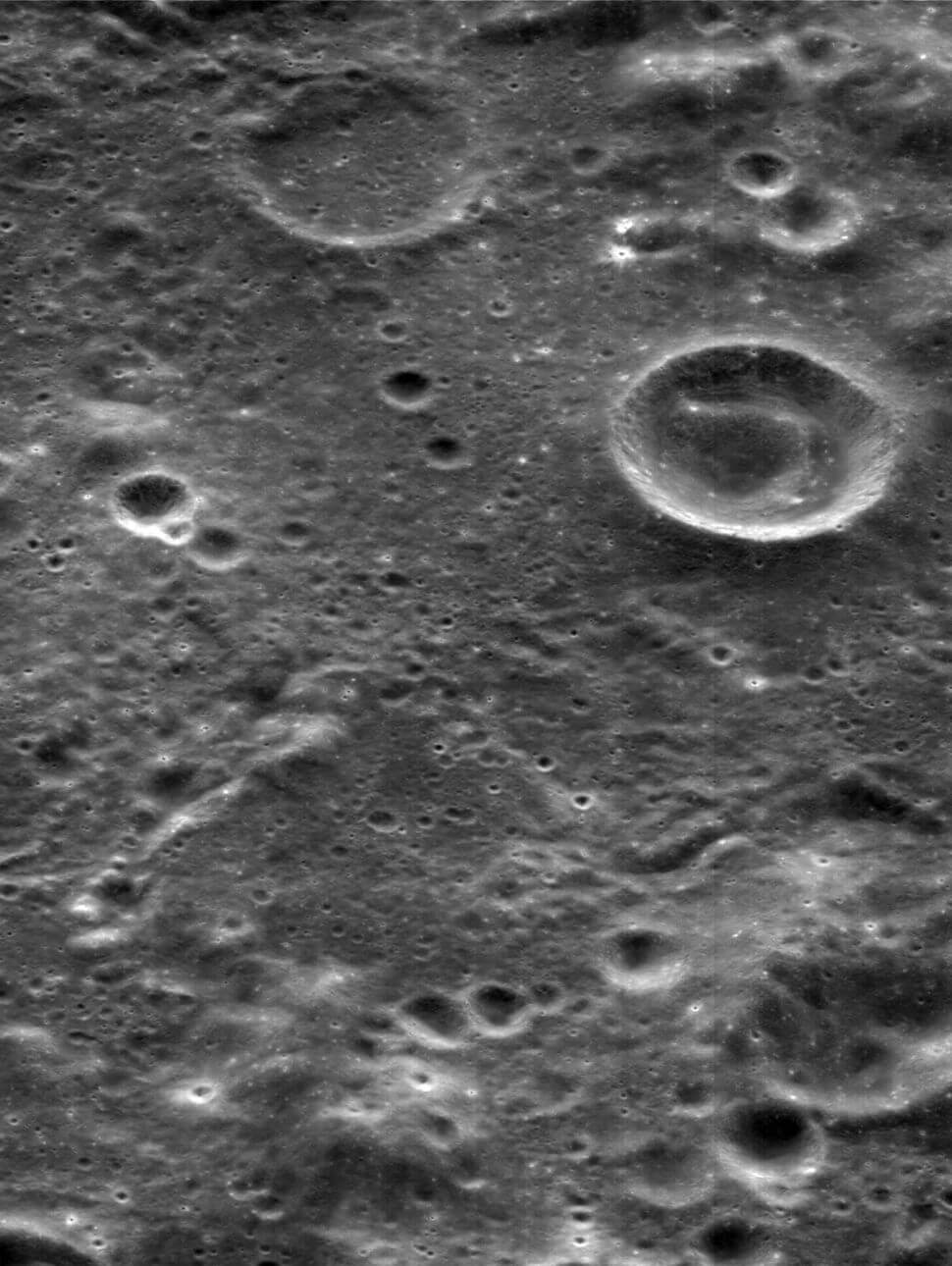The high-resolution science camera on the JUICE probe, which is ultimately headed to Jupiter, was busy snapping images of craters on the moon and clouds in Earth’s atmosphere as the spacecraft flew past our planet to use our world’s gravity and re-route itself toward the next stop on its eight-year voyage to the Jovian system.
JUICE, the Jupiter Icy Moons Explorer, is a European Space Agency mission to the gas planet that launched in April of 2023. The spacecraft’s route to Jupiter is a circuitous one, however, with visits first to Earth and Venus. Those visits are meant to allow for gravitational assists that help JUICE build up enough velocity to expel itself from the inner solar system with minimal fuel and toward a rendezvous with Jupiter in July 2031.
The first of those flyby visits to Earth took place on Aug. 20, with JUICE having had a close encounter with the moon the day before. Already, we have seen images taken by JUICE’s monitoring and navigation cameras during the fly-by — but now, ESA scientists have released the first images from the spacecraft’s science camera, called JANUS.
JANUS is an acronym for the Latin phrase Jovis, Amorum ac Natorum Undique Scrutator, which translates as “Scrutinizer of Jupiter, and all his loves and descendants” – Jupiter’s Galilean moons Io, Europa, Ganymede and Callisto are all named after lovers of Zeus (Jupiter to the Romans) in Greek mythology.
Related: Jupiter-bound JUICE probe slingshots by Earth on way to Venus (photos)
Indeed, once JUICE arrives in the Jovian system, it will scrutinize Jupiter and its moons. The flyby of Earth and our moon therefore presented an important test of JANUS’ capabilities.
The airless surface of the moon, for example, offered a target with challenges not too dissimilar to the airless surfaces of Europa, Ganymede and Callisto, which JANUS is designed to comprehensively map the surfaces of. (Io isn’t on the menu, partly because it is a volcanic moon rather than being an icy ocean moon, and partly because it is so close to Jupiter that navigating to the volcanic moon would be difficult — although JUICE’s long-range instruments will keep an eye on Io’s spewing volcanoes).

When JUICE enters into orbit around Ganymede in 2033, JANUS will be able to image the moon’s icy surface at a resolution of 2.4 meters (7.87 feet) per pixel, which is a resolution far greater than any camera sent to the Jovian system before. It will literally be like mapping a new world. For context, at 5,268 kilometers (3,270 miles) across, Ganymede is larger even than Mercury.
Meanwhile, Earth’s atmosphere provided a suitable testing ground for JANUS’ ability to image clouds. When directed at Jupiter’s atmosphere, JANUS will be able to see details in the vibrant cloud belts down to 10 kilometers (6.2 miles) per pixel.
Further, the imaging team didn’t make it easy for JANUS during the Earth–moon flyby. Great photographers take their time to line-up their shots and capture that perfect scene, but snapping images remotely from a spacecraft that will be between 741 million and 968 million kilometers (460 million and 601 million miles) from Earth while in orbit around Jupiter is another matter, and imaging won’t always be perfect. So, the imaging team deliberately blurred some images of the Earth and moon to see how the camera’s resolution recovery algorithms performed to “un-blur” the images.
For other images, the team partially saturated the exposure to test how saturation affects the unsaturated parts of the image. They experimented with different camera settings and exposure lengths as well, and just, in general, really put JANUS through its paces. As we can see from these images, the camera and spacecraft passed the test with flying colors.
Now, the stage is set for the next phase of the long journey to Jupiter. The flyby of Earth altered JUICE’s trajectory, actually slowing it down by a total of 5.7 kilometers (3.5 miles) per second and bending its path by 100 degrees so it can now head toward Venus, from which it will receive a gravitational boost in August 2025. This encounter will then slingshot JUICE back out to rendezvous with Earth twice more, in September 2026 and January 2029, at which point it will receive its final boost toward Jupiter.